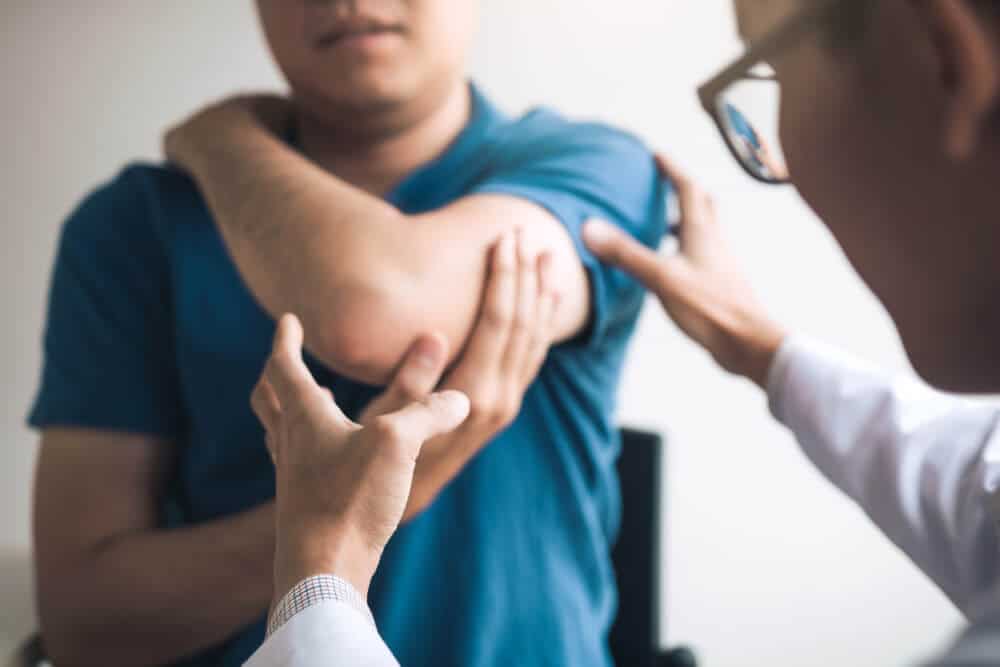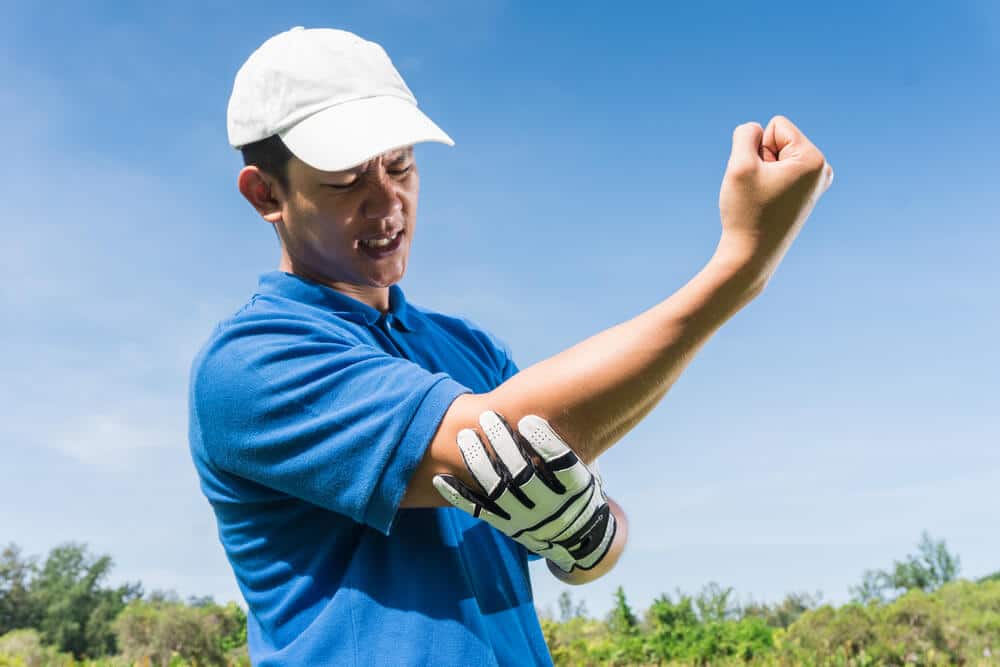

Bursitis is a painful condition that affects the small fluid-filled sacs called bursae, which are located throughout the body near joints where friction between tissues occurs. These bursae act as cushions between bones, tendons, muscles, and skin, helping to reduce friction and facilitate smooth movement of the joints. When a bursa becomes inflamed or irritated, it can lead to bursitis.
The most common sites for bursitis include the shoulder, elbow, hip, knee, and heel (Achilles tendon). Symptoms of bursitis may vary depending on the affected joint but commonly include:
Pain: The affected joint may worsen with movement or pressure.
Swelling: Tenderness or warmth around the joint.
Limited Range of Motion: Stiffness or difficulty moving the affected joint.
Redness: Or skin irritation over the affected area.
Crepitus: A feeling or sound of popping, clicking, or grinding in the joint.
Weakness: Or difficulty using the affected limb or performing daily activities.
If you are experiencing bursitis in your fingers, hand, or elbow and need treatment, please contact us at Fair Oaks Orthopedics. Our professional medical staff can help you to relieve your pain by simply calling us today.
Bursitis can occur in various locations throughout your body, with each type of bursitis typically named after the specific bursa affected. Some common types of bursitis include:
Hand and Finger Bursitis: Bursitis in the hand and fingers can affect the bursae located near the joints and tendons of the hand and fingers. For example:
Carpal Tunnel Bursitis: Bursitis can occur in the carpal tunnel area, leading to swelling, pain, and discomfort in the wrist and hand.
Digital (Finger) Bursitis: Bursitis can develop in the fingers, particularly near the joints, due to repetitive movements, trauma, or pressure on the area. It can cause pain, swelling, and tenderness around the affected finger joints.
Mucous Sheath Bursitis: This type of bursitis affects the mucous sheaths of the tendons in the fingers. It can cause pain, swelling, and restricted finger movement.
Elbow Bursitis: Bursitis in the elbow is also common and can affect different bursae around the joint. Some types of elbow bursitis include:
Olecranon Bursitis: This is one of the most common types of elbow bursitis, affecting the bursa located at the tip of the elbow, over the olecranon process. It can cause swelling, tenderness, and pain at the back of the elbow.
Medial and Lateral Epicondylitis: While not strictly bursitis, these conditions involve inflammation of the tendons near the elbow, and swelling in the surrounding bursae can contribute to symptoms.
These types of bursitis in the hand, fingers, and elbow can result from repetitive movements, trauma, overuse, or underlying medical conditions. Symptoms may include pain, swelling, tenderness, restricted movement, and warmth in the affected area.
Subacromial Bursitis: This type of bursitis affects the subacromial bursa, located between the rotator cuff tendons and the acromion (a bony prominence of the shoulder blade). Subacromial bursitis is a common cause of shoulder pain and stiffness, often associated with impingement syndrome or rotator cuff injuries.
Trochanteric Bursitis: Affecting the bursae near the femur’s greater trochanter (the bony prominence on the side of the hip). It is a common cause of hip pain, especially on the outside of the hip, and can be aggravated by activities such as walking, climbing stairs, or lying on the affected side.
Ischial Bursitis: Also known as “weaver’s bottom” or “sitting bone bursitis,” ischial bursitis affects the bursa located between the hamstring muscles and the bony prominence of the pelvis known as the ischial tuberosity. It can cause pain and discomfort in the buttock region, especially when sitting for prolonged periods.
Prepatellar Bursitis: Affecting the bursa between the skin and the patella (kneecap) at the front of the knee. It is often referred to as “housemaid’s knee” due to its association with kneeling activities, such as cleaning or gardening. Prepatellar bursitis can cause swelling, tenderness, and pain in the front of the knee.
Olecranon Bursitis: Affecting the bursa at the tip of the elbow, over the olecranon process (the bony prominence of the ulna). It is commonly referred to as “student’s elbow” or “Popeye elbow” and can cause swelling, tenderness, and pain at the back of the elbow.
Achilles Tendon Bursitis Affects the bursa between the Achilles tendon and the heel bone (calcaneus) at the back of the ankle. It can cause pain, swelling, and tenderness in the area, especially with activities that involve repetitive ankle motion or pressure on the Achilles tendon.
These are just a few examples of the many types of bursitis that can occur throughout the body. Bursitis can also affect other areas such as the hip, elbow, wrist, and foot. The specific symptoms and treatment approach may vary depending on the location and severity of the bursitis. If you suspect you have bursitis or are experiencing symptoms consistent with this condition, it’s essential to seek evaluation and treatment from a healthcare professional for appropriate management.
The symptoms of bursitis can vary depending on the location and severity of the condition. However, some common symptoms associated with bursitis include:
Pain: Is the hallmark symptom of bursitis. The pain may vary in intensity and can be dull, achy, or sharp. It is typically localized to the affected area and may worsen with movement or pressure on the bursa.
Swelling: Bursitis often causes swelling in the affected area due to inflammation of the bursa. The swelling may be visible as a lump or bump, mainly if the bursa is located near the skin’s surface.
Tenderness: The affected area may feel tender to the touch, particularly over the inflamed bursa. Pressing on the area or moving the joint may elicit tenderness and discomfort.
Warmth: Inflamed bursae can produce heat in the surrounding tissues, leading to warmth or increased skin temperature over the affected area.
Stiffness: Bursitis can cause stiffness and limited range of motion in the affected joint. Moving the joint entirely or performing certain activities may make it difficult.
Redness: In some cases, bursitis may cause redness or discoloration of the skin over the affected area. This is often accompanied by swelling and tenderness.
Crepitus: Some patients with bursitis may experience a sensation of popping, clicking, or grinding when moving the affected joint. This is known as crepitus and can occur due to friction between inflamed tissues.
Weakness: Bursitis can lead to muscle weakness or decreased strength in the affected area, especially if pain and swelling limit movement and function.
Bursitis treatment typically involves rest, ice, compression, and elevation (RICE), along with pain-relieving medications (such as NSAIDs), corticosteroid injections, physical therapy, and lifestyle modifications to reduce stress on the affected joint. In cases of septic bursitis, antibiotics may be prescribed to treat the underlying infection.
Most cases of bursitis resolve with conservative treatment within a few weeks. However, if symptoms persist or worsen despite treatment or if there are signs of infection, medical evaluation is important for further assessment and management.
Surgery for bursitis is typically considered when conservative treatments have failed to provide relief, and the condition persists or worsens despite appropriate management. The decision to undergo bursitis surgery depends on various factors, including the severity of symptoms, the location of the affected bursa, and the patients’s overall health and activity level.
The surgical approach for treating bursitis may vary depending on the specific circumstances and the underlying cause of the condition. Some standard surgical procedures for bursitis include:
Bursa Removal (Bursectomy): The most straightforward surgical intervention for bursitis involves surgically removing the inflamed bursa. This procedure, known as a bursectomy, aims to alleviate symptoms by eliminating the source of inflammation. Bursectomy may be performed using traditional open surgery or minimally invasive arthroscopic techniques, depending on the location and accessibility of the affected bursa.
Bursal Drainage: In cases of infected bursitis (septic bursitis), surgical drainage of the infected bursa may be necessary to remove pus and debris and prevent the spread of infection. This procedure involves making an incision over the affected area to access the bursa and drain its contents, followed by irrigation and debridement of the infected tissue.
Tendon Release or Decompression: In some cases, bursitis may be associated with impingement or compression of nearby tendons or structures. Surgical procedures to release or decompress these structures may be performed to alleviate pressure on the affected bursa and reduce symptoms.
Tendon Repair: In rare cases of severe or chronic bursitis, particularly those associated with tendon tears or structural damage, surgical repair or reconstruction of the affected tendon may be necessary to restore normal joint function and alleviate symptoms.
Joint Reconstruction or Replacement: In advanced cases of bursitis associated with joint degeneration or arthritis, surgical interventions such as joint reconstruction or joint replacement surgery may be considered to address underlying joint pathology and alleviate symptoms.
Recovery from bursitis surgery varies depending on the type and extent of the procedure, as well as individual factors such as age, overall health, and adherence to postoperative rehabilitation protocols.
Following surgery, patients typically undergo a period of immobilization, followed by a structured rehabilitation program to restore strength, flexibility, and function in the affected joint.
Mon 8:00 am – 4:30 pm
Tue 8:00 am – 4:30 pm
Wed 8:00 am – 4:30 pm
Thu 8:00 am – 4:30 pm
Fri 8:00 am – 4:30 pm
Sat Closed
Sun Closed

